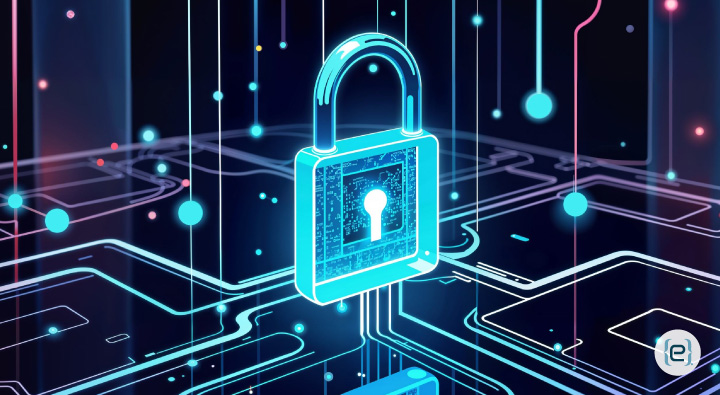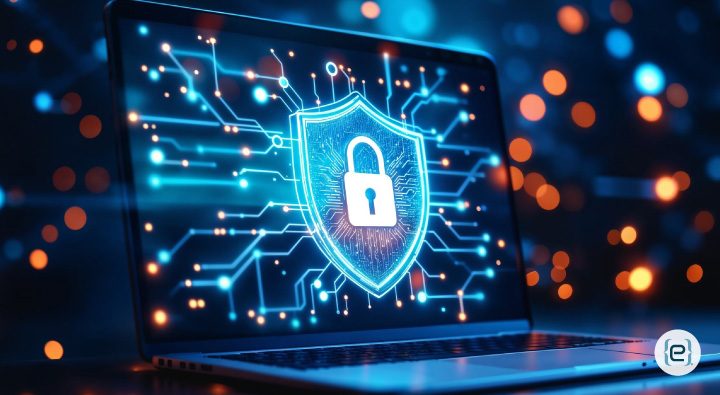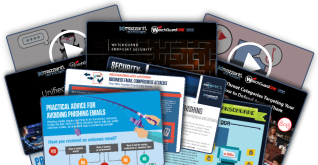The Morning Routine Revolution
Remember when brushing your teeth felt like a chore? Now, you do it without thinking—muscle memory takes over before you’re even awake. That’s exactly what happened to me with cybersecurity habits, though it took an embarrassing incident involving a sketchy download and three days of system recovery to get there. These days, my security checks are as automatic as my coffee routine. Let me share how I turned cybersecurity from a hassle into a habit, so you can avoid learning things the hard way.
The Password Dance: Making Security Second Nature
I used to be that person with “password123!” everywhere. Then my gaming account got hacked, and suddenly my Netflix was showing Bulgarian soap operas and my Amazon was ordering things I couldn’t pronounce. Now password management is part of my daily flow. Every morning, while my coffee brews, I check my password manager’s security report. It takes 30 seconds, just like checking the weather. Last month, I found three compromised passwords during this ritual—saving myself countless headaches. The trick isn’t making better passwords; it’s making password checking as natural as grabbing your keys before leaving home.
- Automate Strong Passwords: Use a password manager and make reviewing your security report a daily habit.
- Multi-Factor Authentication: Add a second layer of protection for your most critical accounts. Learn more about multi-factor authentication and why it’s essential.
The Update Game: Routine Maintenance Saves the Day
Updates used to be my nemesis—always popping up at the worst moments. Then I had this revelation during a dentist visit: you don’t wait until your teeth hurt to brush them, so why wait for a breach to update your systems? Now, Sunday mornings are my digital hygiene time. Coffee, bagel, system updates. Made it a ritual, complete with a mug that says “Don’t talk to me, I’m updating.” Just last week, a ransomware attack hit several companies in our industry. What saved my systems? An update I’d installed during my Sunday routine that patched the exact vulnerability they exploited.
- Schedule Updates: Pick a consistent time each week for updates—make it part of your routine.
- Automate Where Possible: Set devices and apps to auto-update, but still check manually to be sure.
- Protect Against Ransomware: Stay ahead of threats by understanding the latest ransomware tactics and how updates can help.
The Backup Rhythm: Don’t Lose What Matters
Ever notice how you automatically save important documents while working? That’s the kind of instinct we need for backups. I learned this after losing six months of family photos to a hard drive crash. These days, backing up is like doing the dishes—you don’t go to bed until it’s done. Set up automated backups, but check them regularly. Make it part of your wind-down routine. I check my backup status every night while brushing my teeth (yes, digital and dental hygiene in harmony).
- Automate Backups: Use cloud solutions or external drives.
- Verify Backups: Regularly check that your backups are running and data is accessible.
- Protect Your Business Data: Discover how third-party backup solutions can safeguard your company’s critical information.
The Email Sixth Sense: Pause Before You Click
Opening emails used to be automatic—see message, click link, deal with consequences later. Now, I’ve developed what my colleagues call a “phishing spider-sense.” It’s not complicated—just a three-second pause before clicking. Check the sender, hover over links, question everything. Last month, I caught a phishing email that slipped through our filters just because something felt “off” about the sender’s address. One extra letter in the domain name—would have missed it if I hadn’t made suspicious thinking my default mode.
- Pause and Inspect: Take three seconds to verify sender and links.
- Train Your Team: Regular phishing awareness training helps everyone build this instinct. Explore our phishing training resources for your staff.
The Clean Desk Policy: Physical Security, Digital Benefits
Your digital hygiene starts in the physical world. I used to leave sticky notes with passwords on my monitor (I know, I know). Now my desk cleanup is like a security sweep. End of day routine: logout, lock screen, clear desk of any sensitive info. A cleaning crew member once commented that my desk looks like nobody uses it—best security compliment I’ve ever received. It’s not about paranoia; it’s about making security part of your natural workflow.
- Log Out and Lock: Always lock your screen and log out of accounts when away.
- Clear Sensitive Items: Remove notes, USB drives, and documents from your workspace.

The Social Media Mindset: Think Before You Share
Remember when we’d share everything online without thinking? Those Facebook memories from 10 years ago still make me cringe. Now, before posting, I have a mental checklist that runs automatically. Location sharing? Off. Background details in photos? Checked. Personal info in posts? Minimized. It’s become as natural as checking your reflection before leaving the house. Last week, I caught myself automatically blurring my hotel room number in a vacation photo—didn’t even consciously think about it.
- Review Before Posting: Double-check photos and captions for sensitive details.
- Limit Location Data: Turn off location sharing unless absolutely necessary.
The Network Awareness: Safe Connections Only
Connecting to public Wi-Fi used to be like accepting candy from strangers—you know you shouldn’t, but it’s so convenient. Now my VPN activates automatically on unknown networks, like putting on a seatbelt in a car. Made it a game with my team—first person to spot someone using unsecured Wi-Fi at a coffee shop buys the next round. We’re probably the only people who get excited about seeing “Invalid Certificate” warnings.
- Use a VPN: Connect securely on public networks.
- Stay Alert: Avoid entering sensitive information on unfamiliar Wi-Fi.
The Device Discipline: Lock It Down
Your phone is basically a portable filing cabinet of personal information. I started treating it that way after watching a colleague’s unlocked phone get accessed during a lunch break. Now, device locking is like zipping up your jacket in cold weather—automatic and necessary. Face ID, fingerprint, PIN—belt and suspenders approach. You never realize how often you check your phone until you have to authenticate each time, but now it feels weird if I don’t have to unlock it.
- Enable Device Locks: Use biometric authentication and strong PINs.
- Auto-Lock Timers: Set devices to lock quickly when not in use.
Building Better Habits: Consistency Over Perfection
Here’s my controversial opinion: cybersecurity isn’t about being perfect; it’s about being consistent. Small, repeatable actions beat elaborate, occasional security measures every time. It’s like going to the gym—better to do a little every day than an intense session once a month. Start small, build slowly, and soon you’ll find yourself automatically checking SSL certificates on websites like you check expiration dates on milk.
The Professional Edge: Make Security a Company Culture
While personal cyber hygiene is crucial, your business needs a more comprehensive approach. Having a professional technology partner can help establish and maintain security habits across your organization, making cybersecurity a seamless part of company culture. The right IT partner doesn’t just implement measures; we help make them intuitive and automatic for everyone in your business.
For businesses looking to build better security habits, working with experienced IT professionals provides the structure and support needed to make cybersecurity as natural as locking your doors at night. At eMazzanti, we help you turn security from a chore into peace of mind. Contact us today to learn how we can help your team build habits that protect your business—every day, automatically.






